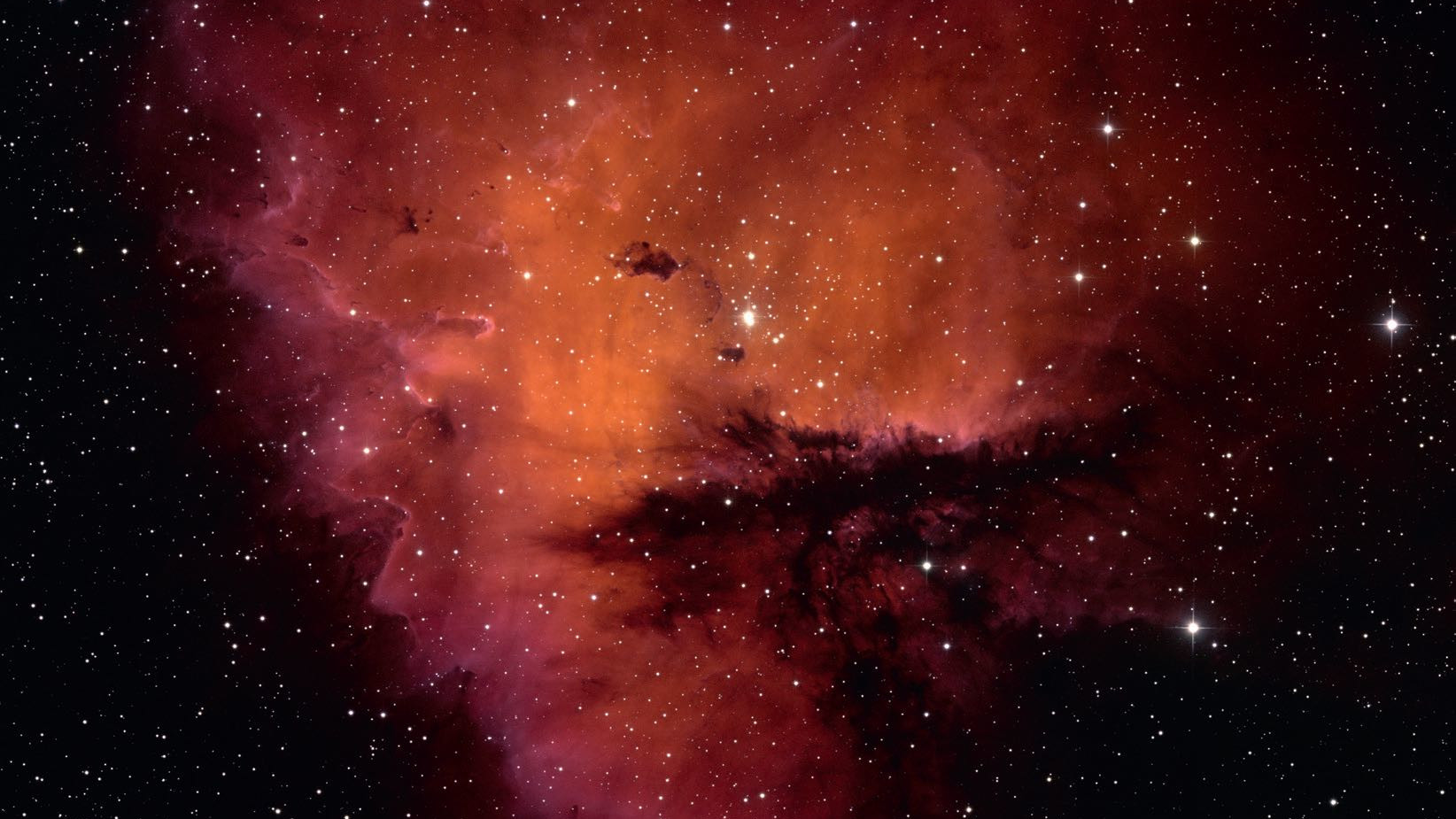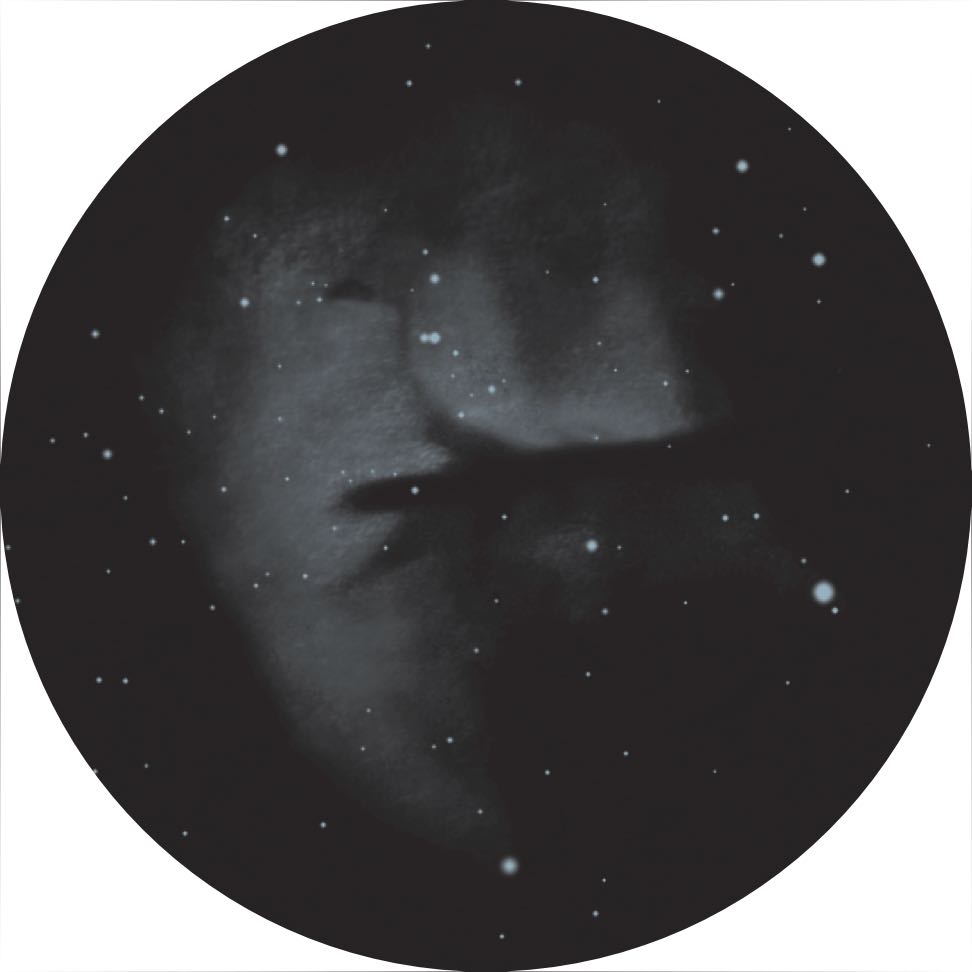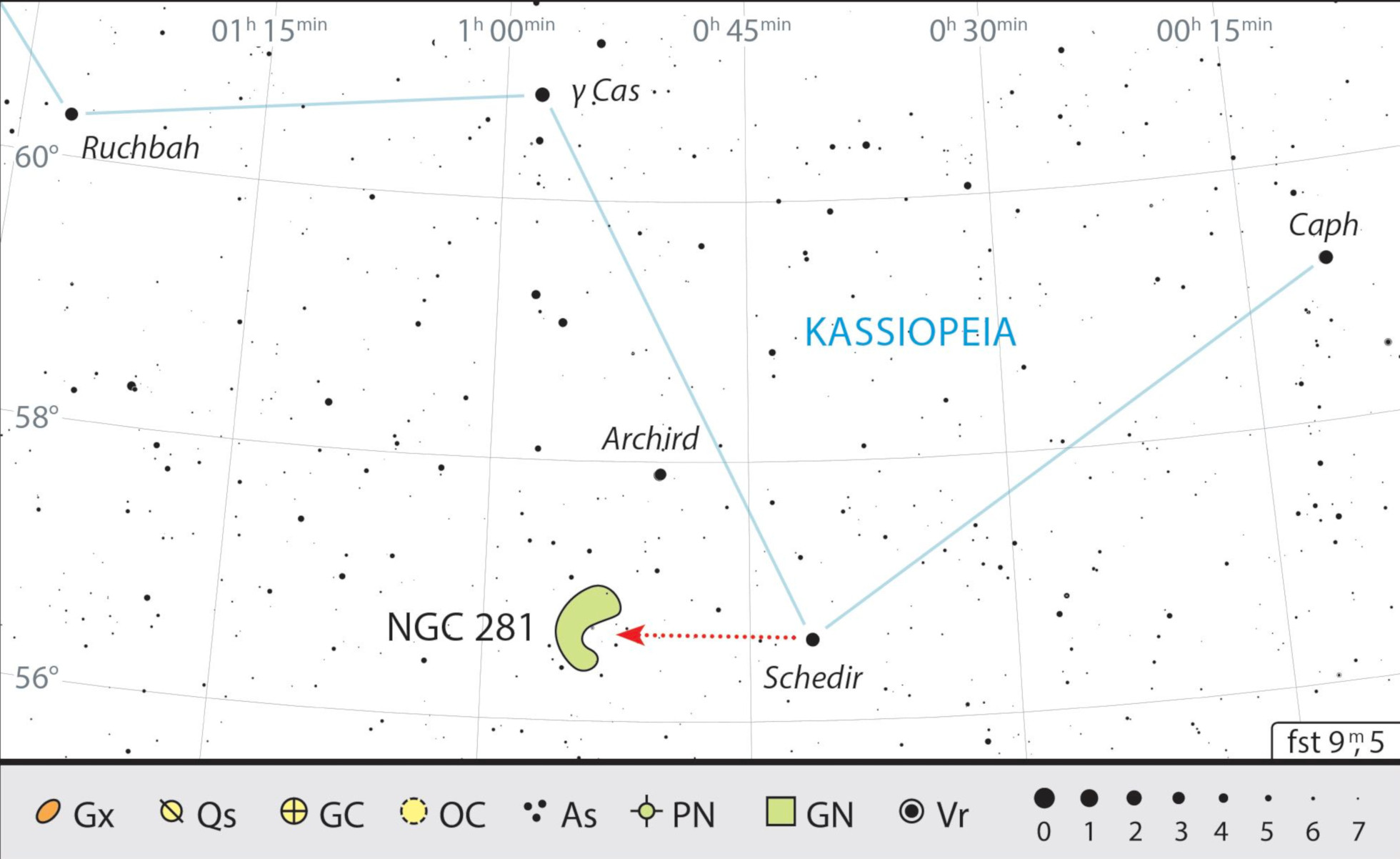A Pacman in the night sky
A wealth of details makes this small gas nebula, which was discovered in 1881 by US astronomer Barnard, a popular target for deep sky lovers.
 The shape of NGC 281 is not only clear in photographs, but also visually it’s reminiscent of the Pacman figure. NSF/AURA/WIYN/T. Rector (University of Alaska)
The shape of NGC 281 is not only clear in photographs, but also visually it’s reminiscent of the Pacman figure. NSF/AURA/WIYN/T. Rector (University of Alaska)On 26 November 1881, the American astronomer Edward Emerson Barnard encountered a small gas nebula in the constellation of Cassiopeia. He was actually looking for comets whose discovery was rewarded with a prize of 200 dollars, which would be equivalent to 4,400 dollars today. He described his discovery as a faint, diffuse nebula, no more than ten arc minutes across. It was named NGC 281, its central star cluster was named IC 5090.
Greedy nebula
 Drawing of NGC 281. Rainer Mannoff
Drawing of NGC 281. Rainer MannoffNGC 281 is a typical emission nebula, whereby the matter contained within – usually hydrogen – is excited by one or more very hot stars. At the centre of the nebula, which is around 9,500 light years away, is the multiple star HD 5005. It is the brightest (around mag. 7.8) and at the same time the hottest member of the cluster, so its high-energy UV radiation provides the majority of the ionization of the hydrogen in the surrounding region.
Such a region usually appears spherical, with the energy source in the centre. With NGC 281, however, about a quarter of the nebula is hidden by dust clouds that are in the foreground. This creates its unusual appearance that is both photographically and visually striking, which reminded astronomers in the 1980s of a famous computer game character, giving this small object the commonly-used nickname the Pacman Nebula. And it really does look like the greedy nebula is snapping at the dust cloud.
Multiple star system in the centre
NGC 281 is easy to find, close to Cassiopeia's brightest star, α Cas. Under a dark sky, it can be seen with a small aperture telescope or even with binoculars as a faint nebula around a bright central star. HD 5005 is a challenging multiple star system of four suns; the most difficult component is just 1.4" distant. The typical Pacman shape is visible in a medium aperture telescope using a nebula filter: besides the eye-catching nebula, a fainter area becomes visible, revealing the dust cloud’s wedge-shaped incision in the foreground.
A small and compact dark cloud directly to the north of the central star is difficult but rewarding. It’s worth trying to observe this with larger optics from 8 inches upwards.
 The Pacman Nebula is located very close to α Cas (Shedar), Cassiopeia's brightest star. J. Scholten
The Pacman Nebula is located very close to α Cas (Shedar), Cassiopeia's brightest star. J. ScholtenAuthor: Nico Schmidt / Licence: Oculum-Verlag GmbH
